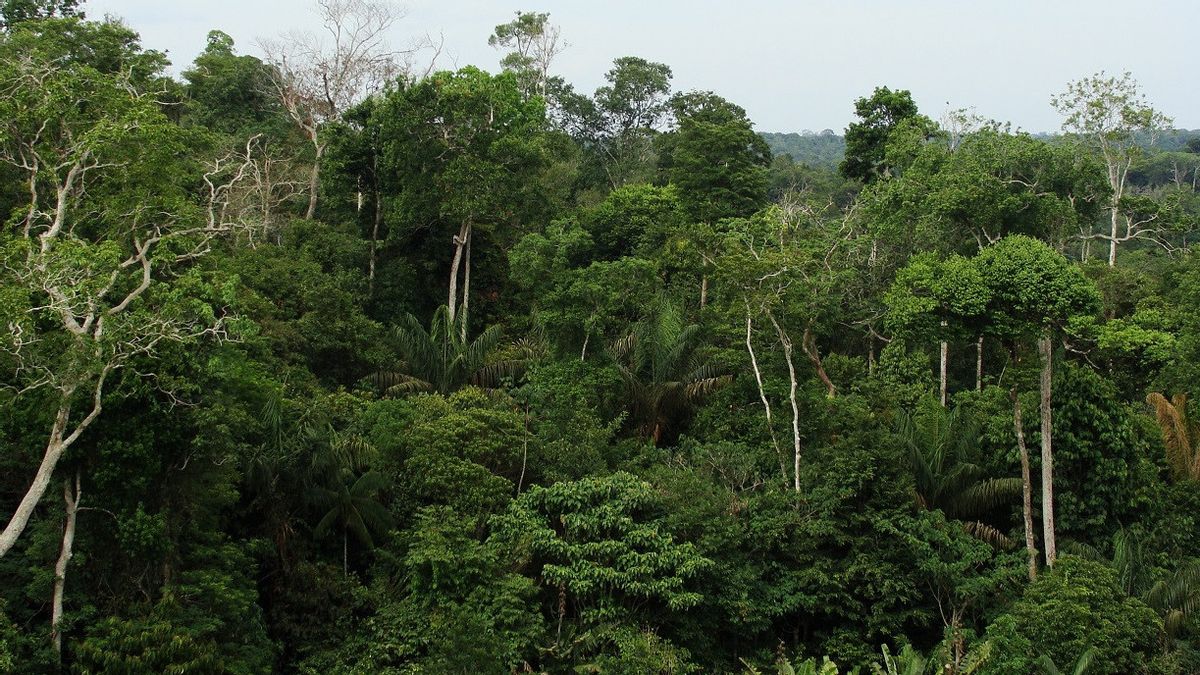JAKARTA - The asteroid collision that killed a dinosaur gave birth to our planet's tropical rainforest, a study suggests.
Researchers used pollen and leaf fossils from Colombia to investigate how its impact transformed South America's tropical forests.
After space rocks 12 km wide hit Earth 66 million years ago, the type of vegetation that made up this forest changed drastically. According to the BBC, the findings are published in the prestigious 'Science'.
"Our team examined more than 50,000 records of fossil pollen and more than 6,000 leaf fossils before and after the collision," Dr. Monica Carvalho of the Smithsonian Tropical Research Institution in Panama, said.

The researchers found, cone-bearing plants called conifers and ferns were common before large asteroids hit what is now the Yucatan Peninsula in Mexico.
However, after devastating impacts, crop diversity declined by about 45 percent and extinction was widespread, especially among seed-producing plants. While forests recovered over the next six million years, angiosperms, or flowering plants, dominated them.
The structure of tropical forests also changed as a result of this transition. During the Late Cretaceous Period, when dinosaurs were still alive, the trees that formed the forest had a very wide distance. The top does not overlap, leaving an open, sunlit area on the forest floor.
However, after the asteroid collision, the forest developed a thick canopy that allowed less light to reach the ground.

So how does the impact turn rare tropical forests rich in conifers from the age of dinosaurs into today's rainforests, with towering trees decorated with colorful flowers and orchids?
Based on the analysis of pollen and its leaves, researchers submitted three different explanations. First, dinosaurs were able to keep the forest from growing too dense by eating and trampling on plants growing at the bottom of the forest.
Second, ash that falls from asteroid collisions, enriching the soil throughout the tropics, providing an advantage for flowering plants that grow faster. While the third explanation, the preferential extinction of coniferous species creates opportunities for flowering plants to take over.
The ideas produced by this research team are not mutually exclusive. And, all of which contributes to the conditions we see today.
"The lesson learned here is that, under rapid disruption, tropical ecosystems don't just bounce back. But it was also replaced, and the process took a very long time," another member of the research team, Dr. Carvalho, said.
The English, Chinese, Japanese, Arabic, and French versions are automatically generated by the AI. So there may still be inaccuracies in translating, please always see Indonesian as our main language. (system supported by DigitalSiber.id)













